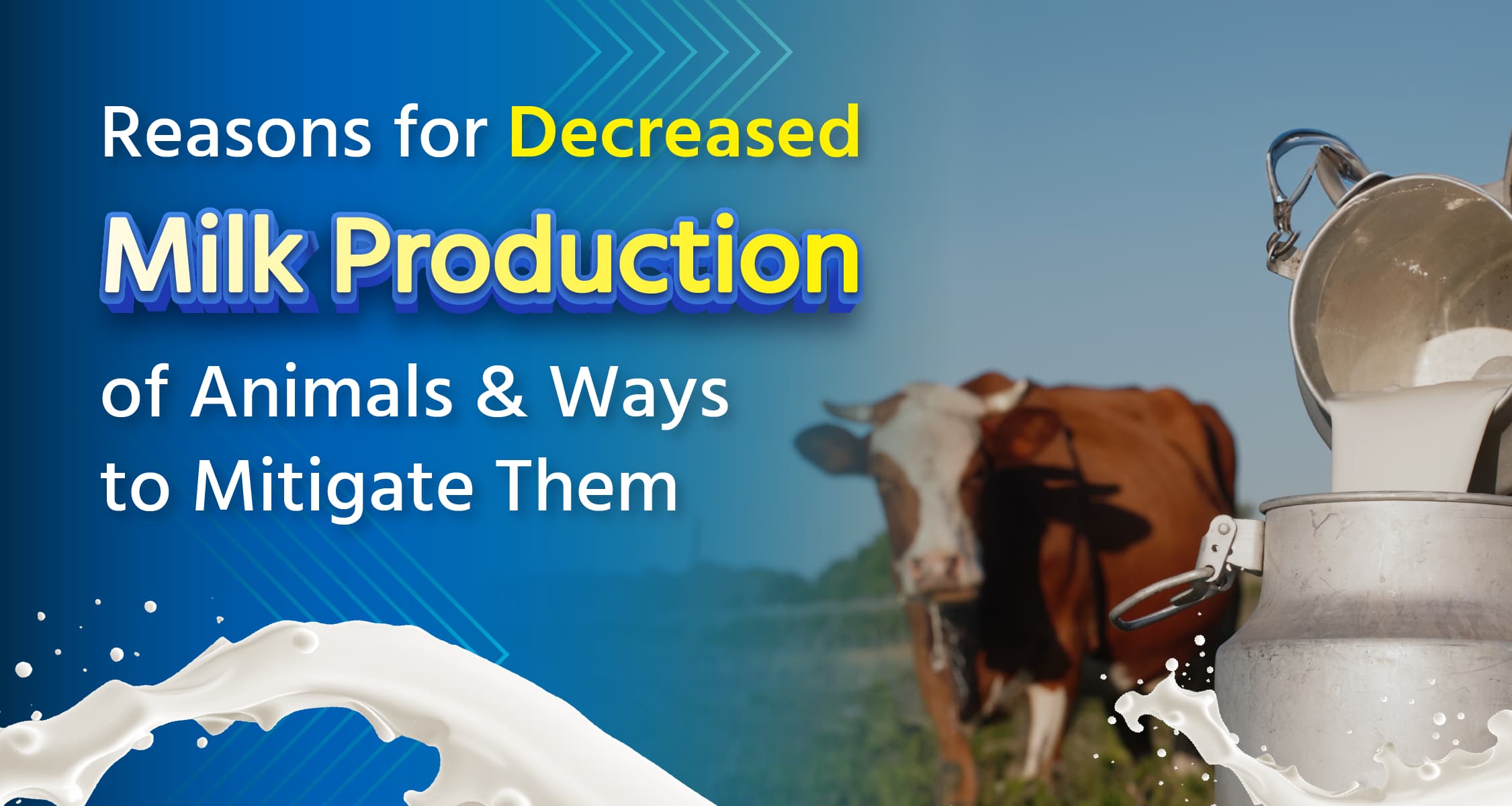Factors Affecting Milk Production in Cattle and Ways to Improve

Livestock farmers often complain about a decrease in milk production in cattle. Sometimes, this issue arises naturally, but there are many other factors affecting milk production. These include the age of the animals, their breed, and their diet. By focusing on some factors, we can easily enhance the milk production capacity of cattle. Read this post carefully for more information on this topic.
Factors Affecting Milk Production in Cattle
- Changes in Weather and Environment: Sudden changes in environment and temperature significantly impact milk production in animals.
- Inadequate Nutrition: Inadequate intake of essential nutrients also reduces the capacity for milk production.
- Water Scarcity: Milk consists of approximately 85% water. The scarcity of water in the bodies of animals also affects their milk production capacity.
- Sudden Changes in Diet: Abrupt alterations in the diet of animals can also be a significant cause of reduced milk production.
- Gastrointestinal Worms: The presence of worms in the stomach of animals deteriorates their health, consequently diminishing their milk production capacity.
- Age of Animals: As animals age, their ability to produce milk decreases. Therefore, it's advisable to procure animals of younger age for better milk yield.
- Breed: The milk production capacity varies among different breeds of animals.
- Animal Health: Maintaining good health is crucial for increasing milk production in animals.
- Dry Period: The amount of time given to cows between calving directly impacts the milk obtained during lactation.
- Animal Housing: Clean and comfortable housing, as well as access to open spaces for grazing, also affect milk production in animals.
- Milking Frequency: It's essential to consider how often and how much milk is extracted from cows and buffaloes per day. Even small intervals between milkings can affect the quantity and quality of milk.
- Effect of Heat: Heat stress symptoms in animals can lead to a decrease in milk production.
Ways to Improve Milk Production of Cattle
Balanced Diet
- To enhance milk production in cattle, feed them a minimum of 4 kg of dry fodder per day.
- Along with dry fodder, provide cattle with 15 to 20 kg of green fodder daily.
- Additionally, include supplements such as bran, husk, feed supplements, and animal feed in their diet.
- Instead of making sudden changes in the diet of animals, gradually introduce changes. Sudden changes can often make it difficult for animals to digest.
- According to the milk-producing capacity of animals, also feed them with 'DeHaat Khurak' as a part of their diet.
Clean Water
- Ensure a clean water supply for animals to drink.
- Keep feed and water troughs separate. Never leave water troughs empty.
- Provide animals with a minimum of 27 to 28 liters of clean water per day.
Weather
- To protect animals from the impact of changing weather conditions, ensure appropriate arrangements in their shelters.
- Install vents on the windows of animal shelters to protect them from hot air, rain, and cold winds.
Deworming
- Administer deworming medication to animals at least twice a year.
- Administer deworming medication to young animals at intervals of 3 months and to adult animals at intervals of 4-6 months.
- As part of home remedies, you can include neem leaves in the diet of animals.
Heat
- If there has been a decrease in the milk production capacity of animals due to the heat, then the milk production will automatically increase after the heat subsides.
Feeding 'DeHaat Doodh Plus'
- To enhance the milk production capacity of animals, include 'DeHaat Doodh Plus' in their diet as well. This also increases the fat content in the milk.
- Include 50 gm of DeHaat Doodh Plus in the daily diet of cows and buffaloes.
- Feed 20 gm of DeHaat Doodh Plus daily to calves, lambs, goats, and sheep.
Feeding Bypass Fat
- Feeding animals with bypass fat makes it easier for them to digest fiber-rich diets. Additionally, it helps in addressing nutrient deficiencies in high-yielding animals, thereby enhancing milk production capacity.
- For dairy animals, it is recommended to feed them 15 to 20 gm of bypass fat per kg of milk production.
- For crossbred cows, provide 100 to 150 gm of bypass fat daily.
- Include 150 to 200 gm of bypass fat in the diet of buffaloes every day.
To increase the milk production capacity of animals, what do you include in their diet? Please share your answers with us through comments. If you found this information useful, then like this post and also share it with other farmers. For more interesting information related to animal husbandry, follow the 'Pashu Gyan' channel now.
Frequently Asked Questions (FAQs)
Q: What should be given to increase milk production in animals?
A: To enhance the milk production capacity of animals, provide them with a balanced diet rich in protein, energy, vitamins, and minerals. Include high-quality green fodder and dry fodder in their diet. Avoid feeding animals leftover or stale food at night. Additionally, ensure they have access to clean water.
Q: What should be fed to buffaloes to increase fat content in milk?
A: To increase the fat content in buffalo milk, it is essential to provide them with feed rich in energy and fat. Along with green and dry fodder, feeding them soybean meal, peanut cake, cottonseed meal, etc., can also increase the fat content in their milk. Additionally, include 50 gm of daily feed supplement per buffalo.
Q: What is the best fodder for dairy animals?
A: For dairy animals, legumes, corn, napier grass, alfalfa, berseem, etc., prove to be excellent fodder. Due to its delicious taste, animals also consume it easily, which leads to increased milk production. Additionally, sorghum, guar, pearl millet, oats, etc., can also be included in the animals' diet.
Please login to continue

Get free advice from a crop doctor
